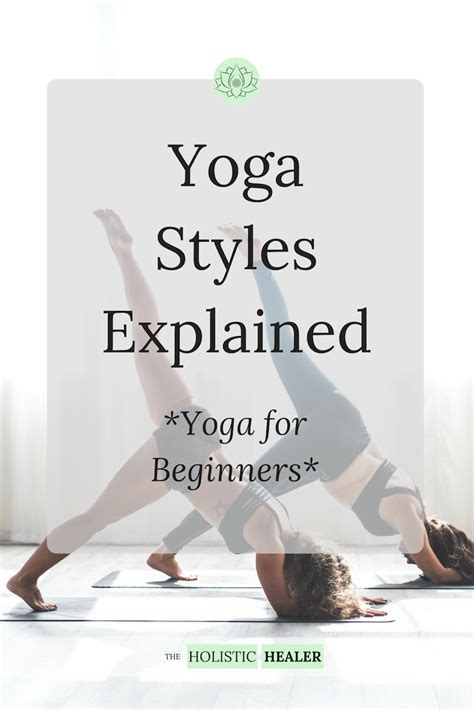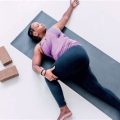Understanding Beginner-Friendly Yoga Styles: A Comprehensive Guide
Yoga has evolved into a multifaceted practice with numerous styles, each catering to different needs and preferences. For beginners, this diversity can be overwhelming. This guide will help you navigate the most beginner-friendly yoga styles, providing clear explanations, historical context, practical applications, and expert analysis. Whether you are seeking relaxation, physical fitness, or spiritual growth, there is a yoga style for you.
Introduction
Yoga is a mind-body practice that originated in ancient India, offering numerous health benefits. Over time, it has evolved into various styles, some highly advanced, while others are designed specifically for beginners. In this article, we will explore several beginner-friendly yoga styles, including their origins, key characteristics, benefits, and how to choose the best one for your needs.
Key Concepts
- Hatha Yoga: A foundational style focusing on basic postures and breathing exercises.
- Vinyasa Yoga: A dynamic style where movement flows with breath, often referred to as “flow yoga.”
- Yin Yoga: A slow-paced style that emphasizes long-held passive stretches to improve flexibility and mindfulness.
- Iyengar Yoga: Known for its focus on precise alignment and the use of props like blocks and straps.
- Restorative Yoga: A deeply relaxing style using props to support the body in restful postures.
- Chair Yoga: A gentle form of yoga that is practiced sitting on a chair or standing using a chair for support, perfect for seniors or those with mobility issues.
Historical Context
Yoga, as we know it today, is deeply rooted in ancient Indian traditions, with the earliest mentions found in texts like the Vedas and Upanishads. Initially, yoga was primarily a spiritual discipline. It wasn’t until the 20th century, with the rise of influential yogis like Krishnamacharya and Iyengar, that modern yoga forms began to emphasize physical postures and alignment, making yoga accessible to people of all abilities.
Current State Analysis
The popularity of yoga has exploded globally, especially in Western cultures where it is often seen as a form of exercise and stress relief. Today, yoga classes are offered in fitness studios, gyms, and even online, catering to various fitness levels and goals. Beginner-friendly styles have gained immense traction, particularly those that focus on accessibility, such as Hatha and Chair Yoga.
Practical Applications
For individuals just starting out, yoga offers a host of practical applications, from improved flexibility and strength to enhanced mental clarity and reduced stress. By engaging in beginner-friendly styles, newcomers can ease into the practice without feeling overwhelmed.
- Hatha Yoga: Perfect for those who prefer a slower-paced introduction to yoga, focusing on basic postures and proper breathing techniques.
- Vinyasa Yoga: For beginners with a bit more physical stamina, Vinyasa helps in building strength and flexibility through continuous movement.
- Yin Yoga: Ideal for those looking for a meditative, passive experience with an emphasis on deep stretches.
Case Studies
Yoga’s impact on individuals varies greatly based on their personal health and fitness goals. Below are some case studies that illustrate how different styles of beginner yoga have helped people achieve better well-being.
| Case Study | Style of Yoga | Outcome |
|---|---|---|
| John, a corporate worker with chronic stress | Restorative Yoga | Significantly reduced stress levels and improved sleep quality after 8 weeks of practice. |
| Sara, a senior with limited mobility | Chair Yoga | Improved joint mobility and reduced back pain, enabling her to move more freely. |
| Alice, a new mother dealing with postpartum anxiety | Yin Yoga | Increased relaxation and mental clarity, reduced anxiety levels, and improved emotional balance. |
Stakeholder Analysis
In the context of yoga, various stakeholders benefit from the growing interest in beginner-friendly styles:
- Practitioners: Gain mental, physical, and emotional benefits from regular yoga practice.
- Yoga Instructors: Benefit from higher demand for classes, particularly beginner-friendly sessions.
- Fitness Centers: Use yoga to attract a wider range of clientele, especially those seeking low-impact fitness routines.
- Healthcare Providers: Recommend yoga as a non-invasive, therapeutic option for various health conditions.
Implementation Guidelines
Implementing a successful beginner yoga routine involves several key steps:
- Start Slow: Opt for classes labeled as “beginner” or “gentle.”
- Focus on Breath: Proper breathing techniques are critical to mastering the foundational postures.
- Use Props: Don’t hesitate to use blocks, straps, or other props for support, especially in Iyengar or Restorative Yoga.
- Practice Regularly: Consistency is more important than intensity. Aim for short, frequent sessions.
- Listen to Your Body: Never push through pain or discomfort. Modify poses as needed to suit your body’s needs.
Ethical Considerations
While yoga is highly beneficial, ethical considerations should be taken into account, especially regarding cultural appropriation and commercialization. Yoga’s spiritual roots in India should be respected, and practitioners should be mindful not to strip the practice of its deeper meaning for the sake of mere physical fitness.
Limitations and Future Research
Although yoga offers numerous benefits, it is not a one-size-fits-all solution. Certain individuals may need modifications or alternative practices based on their health conditions. Future research could explore the long-term benefits of beginner-friendly yoga on specific populations, such as individuals with chronic pain or anxiety disorders.
Expert Commentary
Yoga experts often stress the importance of starting with a solid foundation. According to renowned yoga instructor Amy Weintraub, “Beginners should focus on mastering basic postures and breath control. Only after gaining proficiency should they advance to more complex practices.” Additionally, fitness professionals like James Cassidy argue that yoga’s adaptability makes it accessible to nearly everyone: “The beauty of yoga is its versatility—there is truly a style for every individual.”








